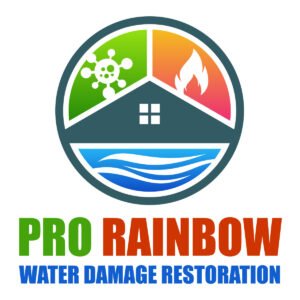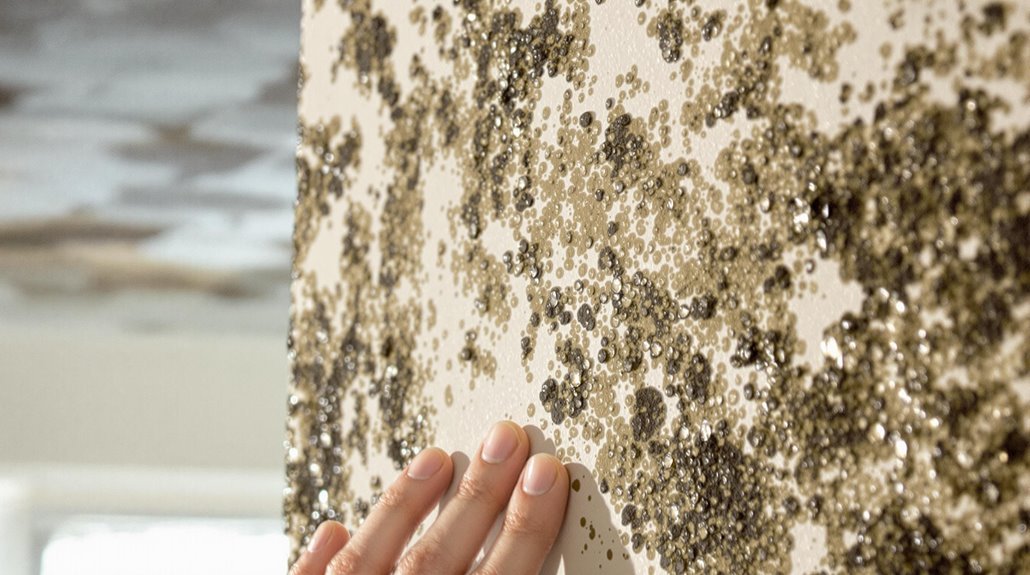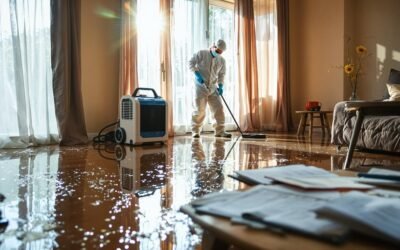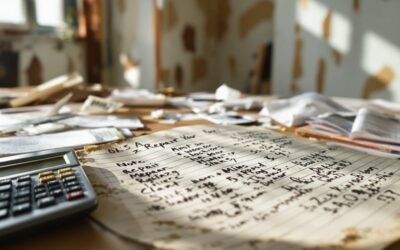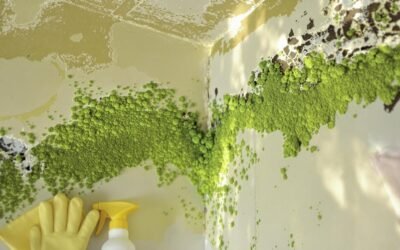Mold starts forming within 24 to 48 hours after water leaks, so acting quickly is vital to prevent extensive damage. You should immediately shut off the water source and dry affected areas thoroughly using fans and dehumidifiers. Open windows for ventilation while monitoring outdoor humidity levels. Be diligent in checking hidden spaces where moisture might linger. If humidity levels exceed 60%, your risk of mold growth increases considerably. Removing soaked materials like carpets can help, too. By following these tips, you can safeguard your home from mold, and there's more valuable information ahead to secure your success.
Key Takeaways
- Mold reproduction can start within 24 to 48 hours after a water leak occurs.
- Visible mold may appear by the third day, depending on moisture levels.
- Keeping humidity below 60% is essential to prevent mold growth.
- Quickly dry affected areas and remove soaked materials to limit mold proliferation.
- Regularly inspect and maintain plumbing to catch leaks before mold can develop.
Understanding Mold Growth Timeline
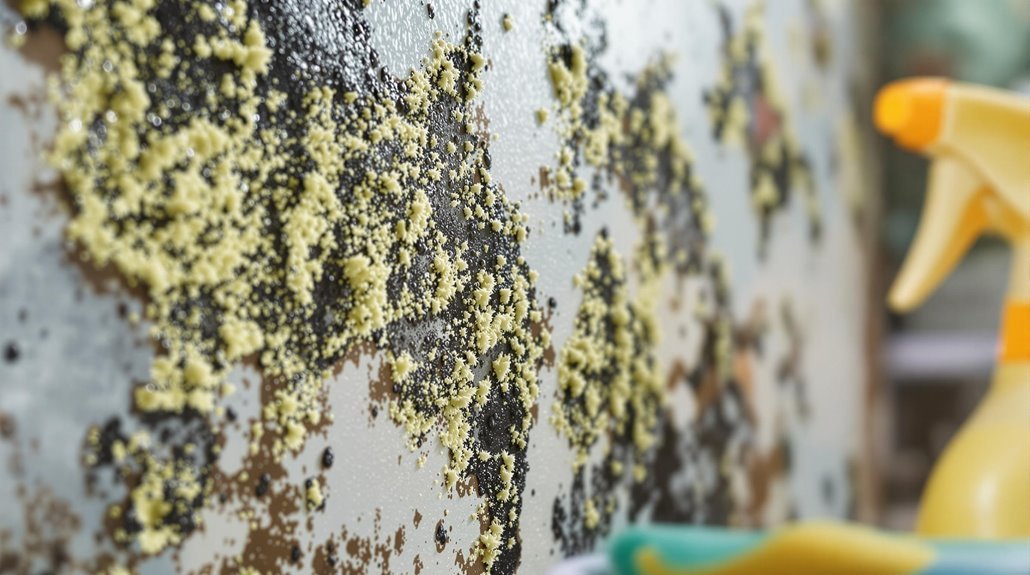
When water leaks occur, understanding the mold growth timeline is vital for effective remediation. Mold reproduction begins almost immediately when moisture levels are high, often within 24 to 48 hours after a leak. During this pivotal period, spores become active and start colonizing damp surfaces, leading to rapid growth. If you don't address the issue swiftly, you could face extensive damage and health risks. By the third day, visible mold may appear, depending on the material and environmental conditions. Maintaining moisture levels below 60% is key in preventing mold formation. Monitoring humidity and addressing leaks promptly can greatly reduce the risk of mold proliferation, ensuring a healthier living environment. Additionally, professional expertise in water damage restoration can significantly enhance your response to leaks, protecting your space from mold damage. Stay vigilant to protect your space from mold damage.
Signs of Mold Growth
Recognizing the signs of mold growth is crucial for preventing further damage and health issues. Look for visible mold patches, often fuzzy or discolored, typically found in damp areas like bathrooms or basements. Musty odors can likewise indicate hidden mold. Employ mold identification techniques, such as examining walls and ceilings for water stains or peeling paint, which signal moisture problems. Rapid mold detection involves evaluating humidity levels; if they exceed 60%, mold may thrive. Furthermore, watch for increased allergy symptoms among household members, as they can be an early warning sign. By being vigilant about these indicators, you can take immediate action to mitigate mold risks before they escalate. Additionally, addressing water damage restoration promptly can prevent mold from developing in the first place.
Health Risks of Mold
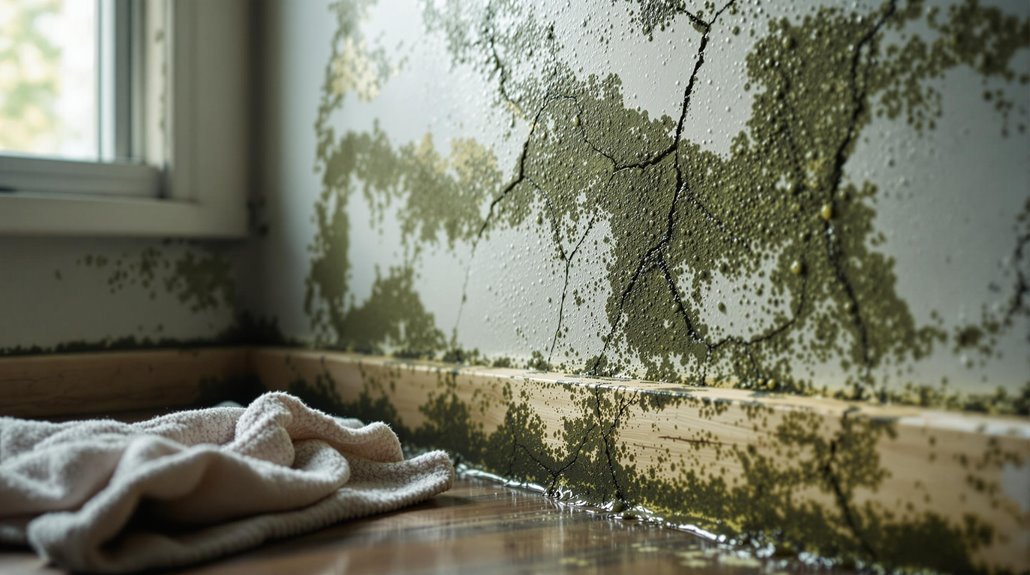
Mold exposure can pose significant health risks, particularly for vulnerable populations such as children, the elderly, and individuals with pre-existing respiratory conditions. When mold spores are inhaled, they can trigger a range of respiratory issues, including asthma attacks, allergic reactions, and chronic sinusitis. Symptoms may manifest as coughing, wheezing, or shortness of breath. Prolonged exposure can worsen these conditions, leading to more severe health complications. Furthermore, some molds produce mycotoxins, which can cause neurological effects and other systemic issues. It's essential to recognize that even healthy individuals may experience adverse effects from mold exposure, emphasizing the importance of addressing mold problems promptly to safeguard everyone's health. Understanding these risks empowers you to take necessary precautions and act swiftly.
Immediate Actions to Take
When you identify a water leak, your first step should be to shut off the water source to prevent further moisture accumulation. Next, prioritize drying the affected areas thoroughly, as quick action can greatly reduce the risk of mold growth. Implementing these immediate measures is essential for maintaining a safe environment in your home.
Shut Off Water Source
Although you may feel overwhelmed after finding a water leak, immediately shutting off the water source is vital to preventing further damage and mold growth. Locate your main water shutoff valve, typically found near the perimeter of your home or in the basement. Turning this valve off halts the flow of water, minimizing the potential for extensive damage. If you can't find the main valve, check for localized shutoffs near the leak. Prompt leak detection is important; a small leak can lead to significant issues if not addressed swiftly. Once the water is shut off, you can assess the situation and begin planning your next steps to mitigate damage and prevent mold growth.
Dry Affected Areas
After securing the water source, your next priority is to dry the affected areas as quickly as possible. Use effective drying techniques such as fans and dehumidifiers to promote airflow and reduce moisture levels. Open windows and doors to aid ventilation, but be cautious of outdoor humidity. It's vital to target hidden areas like behind walls and under floors, where moisture can linger. Check moisture levels with a hygrometer to guarantee effective moisture control. If necessary, remove soaked materials like carpets and insulation to prevent mold growth. The quicker you act, the lower the risk of mold forming. Remember, maintaining a dry environment is fundamental in safeguarding your home from the harmful effects of water damage.
Prevention Tips for Homeowners
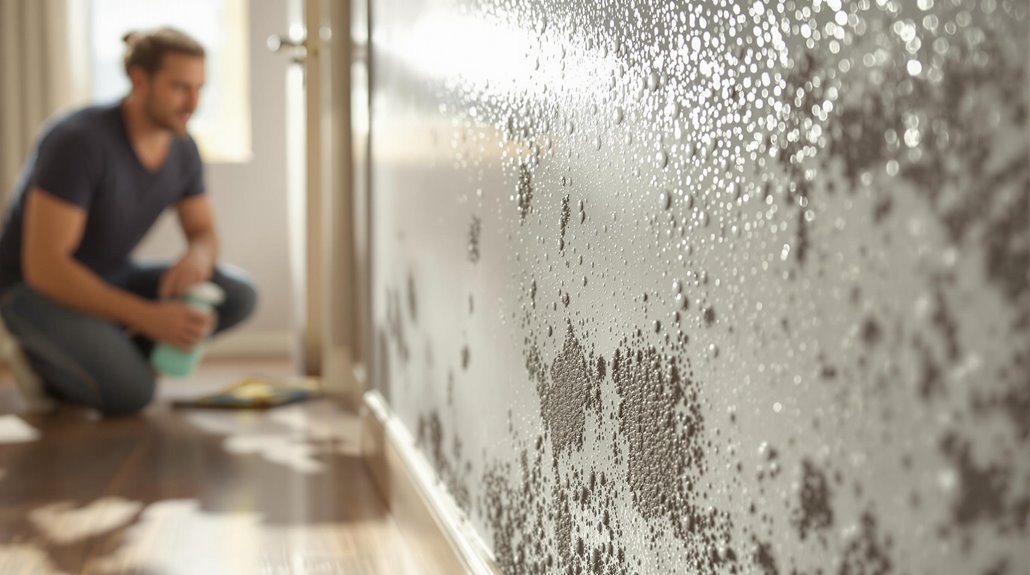
To effectively prevent mold formation after water leaks, it's crucial to address moisture issues promptly and thoroughly. Start by using mold resistant materials in areas prone to dampness, such as bathrooms and basements. These materials can markedly reduce the risk of mold growth. Furthermore, conduct regular inspections of your home, focusing on areas like plumbing fixtures and roofs, to catch leaks early. If you notice any signs of moisture or water damage, act quickly to dry the affected areas and repair any leaks. Guarantee proper ventilation in high-humidity areas, as this helps maintain lower moisture levels. By implementing these proactive measures, you can safeguard your home from mold and its associated health risks.
When to Call Professionals
Recognizing when to call professionals is essential for effectively managing mold issues after water leaks. If you notice extensive water damage, visible mold growth, or experience health issues, it's time to seek help. Professionals specialize in mold remediation and can assess the situation accurately.
| Signs to Call Professionals | Actions to Take |
|---|---|
| Extensive Mold Growth | Contact a mold remediation service |
| Persistent Musty Odor | Schedule an inspection |
| Water Damage Over 24 Hours | Document and report to insurance |
Conclusion
In the fight against mold, acting swiftly is your best defense. Just like a wildfire, mold can spread rapidly if you don't tackle it head-on. By understanding the timeline, recognizing the signs, and taking immediate action, you can protect your home and health. Remember, prevention is key, but if the situation escalates, don't hesitate to call in the professionals. Stay vigilant, and you'll keep your living space mold-free and safe for everyone.
